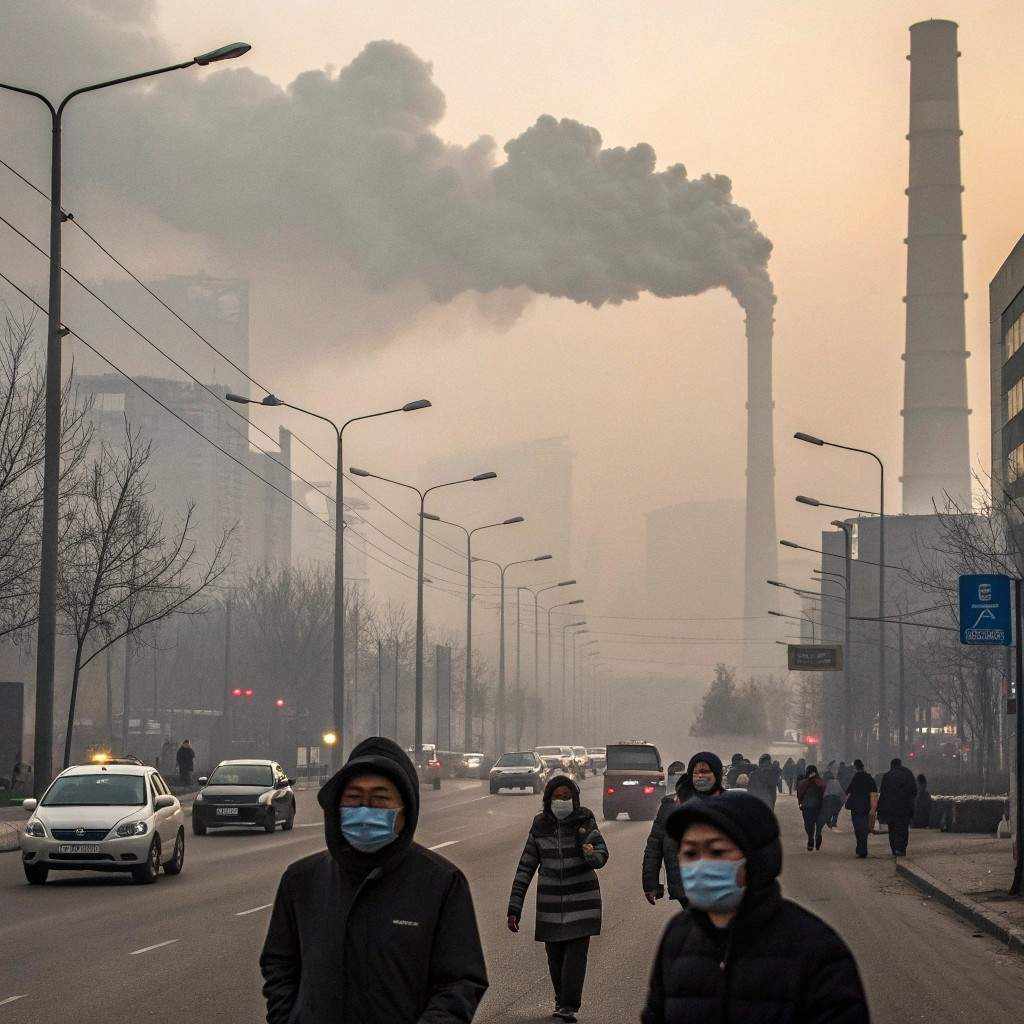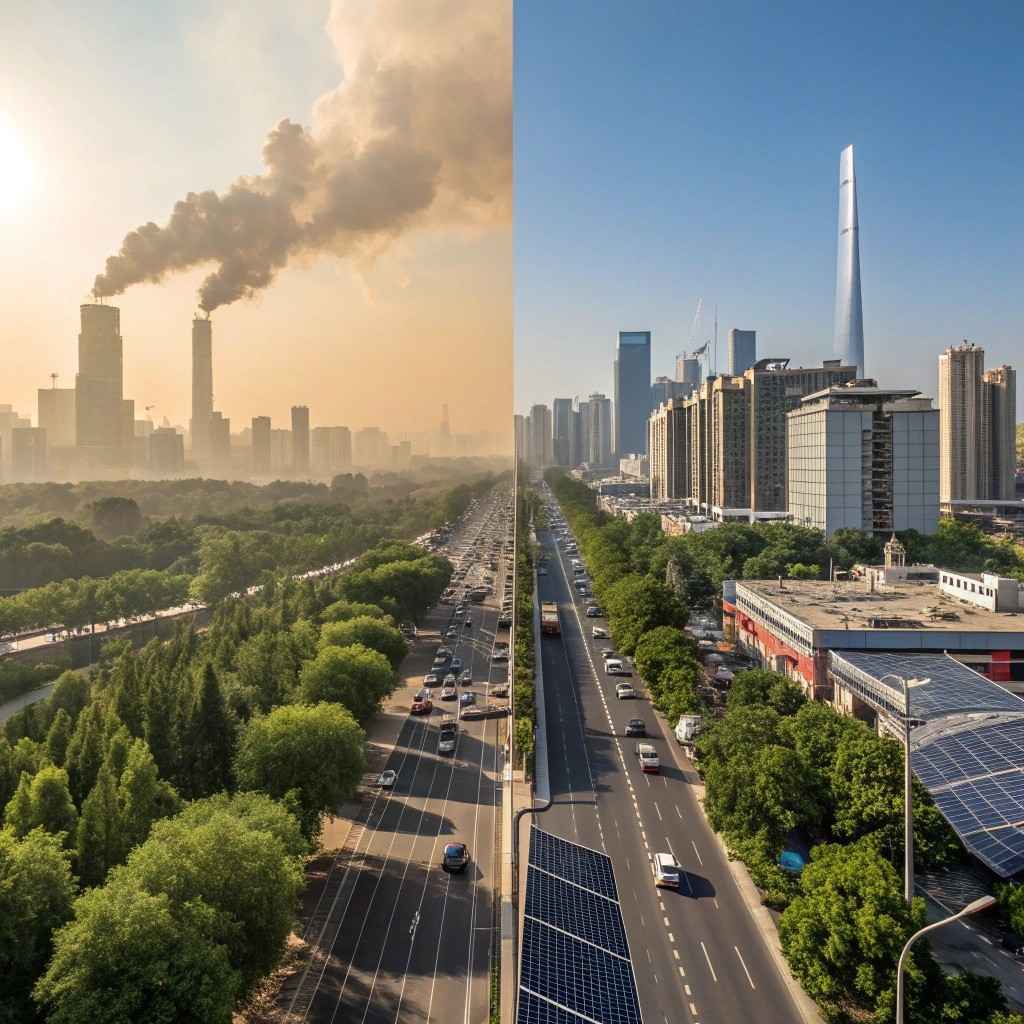In the early 2000s, air pollution in Beijing was notorious as one of the world’s most polluted cities, plagued by dense smog and hazardous air quality that threatened the health of over 21 million citizens. The city’s sky was often obscured by thick gray smog, making it once the “Smog Capital of the World.” This pollution crisis was fueled by heavy coal consumption, booming car ownership, and expansion of polluting industries.
The Turning Point: A Decade-Long Air Quality Campaign
The launch of China’s Air Pollution Prevention and Control Action Plan (APPCAP) in 2013 marked the start of a historic effort to reverse air pollution trends. This comprehensive campaign involved a set of stringent, science-based policies backed by sustained enforcement and investment. It cost an estimated $100 billion over several years and embodied a multi-sector approach:
- Coal Reduction: Historically dependent on coal for heating and power, Beijing aggressively transitioned from coal to cleaner energy sources like natural gas and renewables. Coal consumption fell drastically from over 21 million tonnes annually to under 600,000 tonnes.
- Vehicle Emissions Control: Beijing introduced tougher vehicle emission standards, restricted high-emission vehicles, and promoted electric mobility. By 2025, electric and new energy vehicles were projected to make up half of the city’s fleet, supported by subsidies and infrastructure development.
- Industrial Cleanup: Thousands of heavily polluting factories were shut down or upgraded with ultra-low emission technologies. This regulatory push was coupled with improved industrial emissions monitoring and enforcement.
- Dust and Construction Controls: Measures to reduce dust from construction sites and unpaved areas further contributed to improving ambient air quality.

Scientific and Governance Innovations
Beyond regulations, Beijing’s approach integrated science-driven initiatives such as the “1 microgram initiative” and later the “0.1 microgram initiative” for ultra-precise particulate matter control. The government also orchestrated regional cooperation with neighboring provinces to address air pollution sources beyond municipal boundaries.
Remarkable Results and Lasting Impact
- Beijing’s annual average fine particulate (PM2.5) concentration dropped from hazardous levels to approximately 33 micrograms per cubic meter by 2021.
- The city saw a dramatic reduction in heavily polluted days—from 58 days in 2013 to just 2 in 2024.
- Good air quality days increased by over 100 days annually, reaching a remarkable 290 days in 2024.
- Sulfur dioxide levels dropped by 89%, and fine particulate levels decreased by 64%, significantly improving public health outcomes.
- Beijing now leads globally in electric bus adoption, with 99% of the world’s 385,000 electric buses operating in China.
Lessons from Beijing’s Air Quality Renaissance
Beijing’s success underscores the power of combining regulatory strength, technological upgrades, clean energy transitions, and public awareness. The campaign’s multi-sectoral, multi-year approach demonstrates how even extreme air pollution can be reversed with political commitment and well-coordinated policies. For cities battling similar pollution crises, Beijing’s experience offers a blueprint for action—from stringent emission standards and industrial reform to clean energy adoption and electric vehicle incentives.
This epic turnaround offers hope and practical insights for other metropolitan centers seeking to reclaim breathable air and safeguard citizens’ health through bold, sustained environmental governance.
Delhi and other Indian cities can take valuable lessons from Beijing’s remarkable air quality transformation. The key takeaway is that reversing severe pollution requires a comprehensive, multi-sectoral approach backed by strong political will, scientific precision, and sustained enforcement. Delhi’s current Air Pollution Mitigation Plan 2025 aligns with many Beijing strategies such as stricter emissions standards, promoting electric mobility, industrial pollution control, dust suppression, and innovative methods like cloud seeding for smog dispersion.
However, for Delhi to replicate the “Beijing Miracle,” it must deepen regional cooperation, accelerate the coal-to-clean energy transition, and enhance real-time monitoring and accountability mechanisms. Public awareness and investment in clean technology must complement regulatory reforms. Beijing’s success shows that with persistent, coordinated action over years, even the most polluted megacities can reclaim clean air and safeguard public health.
The Logical Indian’s perspective
Beijing Miracle offers a vital blueprint for India’s urban centers struggling with air pollution, especially Delhi. It reinforces the power of integrated governance, scientific rigor, and long-term political commitment in tackling environmental crises that impact millions of lives. As India embarks on its own ambitious air quality goals, embracing lessons from Beijing—such as prioritizing clean energy transitions, regulating vehicular emissions, and enforcing industrial compliance—can accelerate progress. More importantly, The Logical Indian believes engaging citizens through awareness and participatory governance will be critical to sustain cleaner air for future generations. Ultimately, achieving the vision of breathable, healthy cities across India hinges on replicating the spirit of cooperation, innovation, and perseverance emblematic of the Beijing Miracle.












